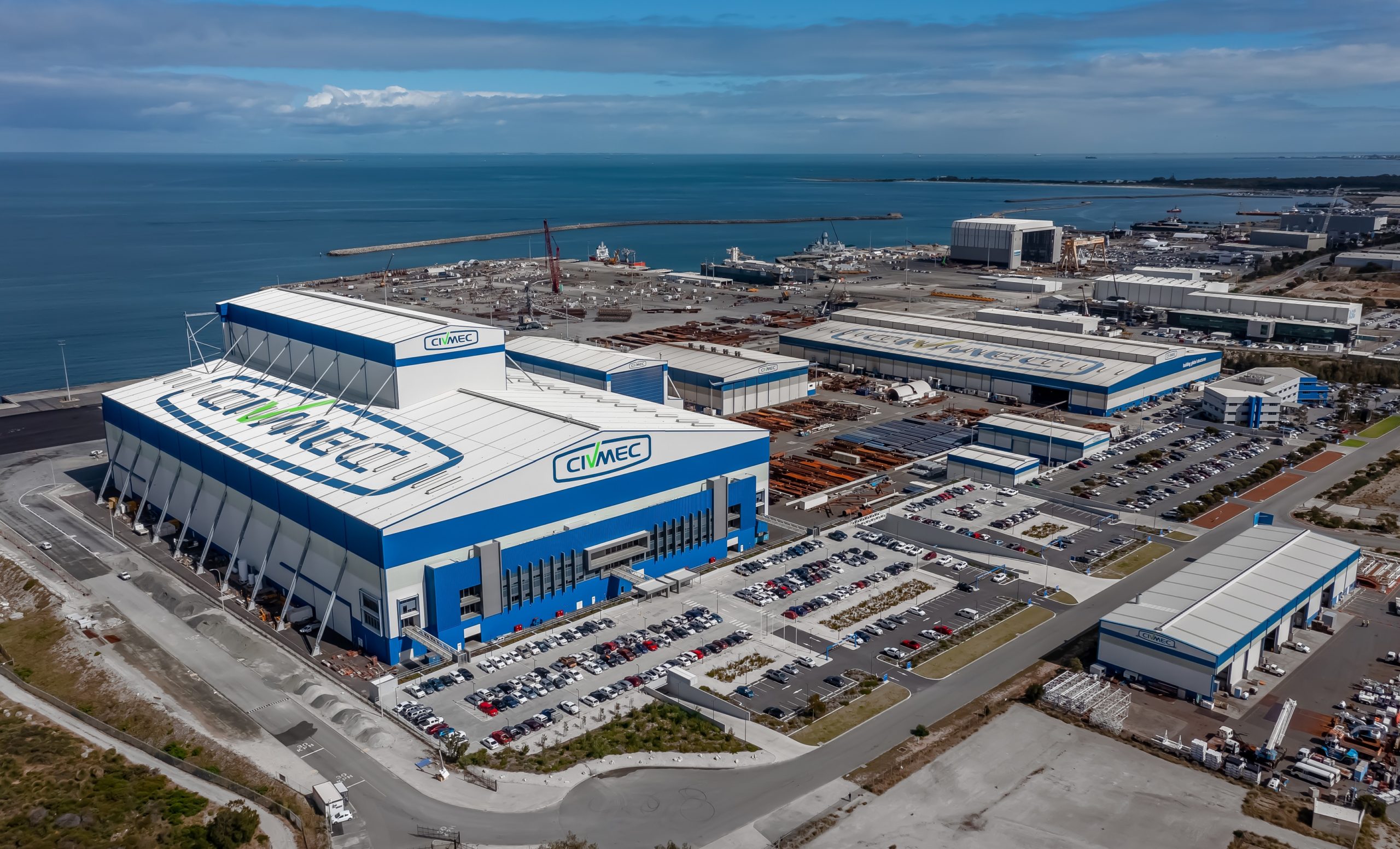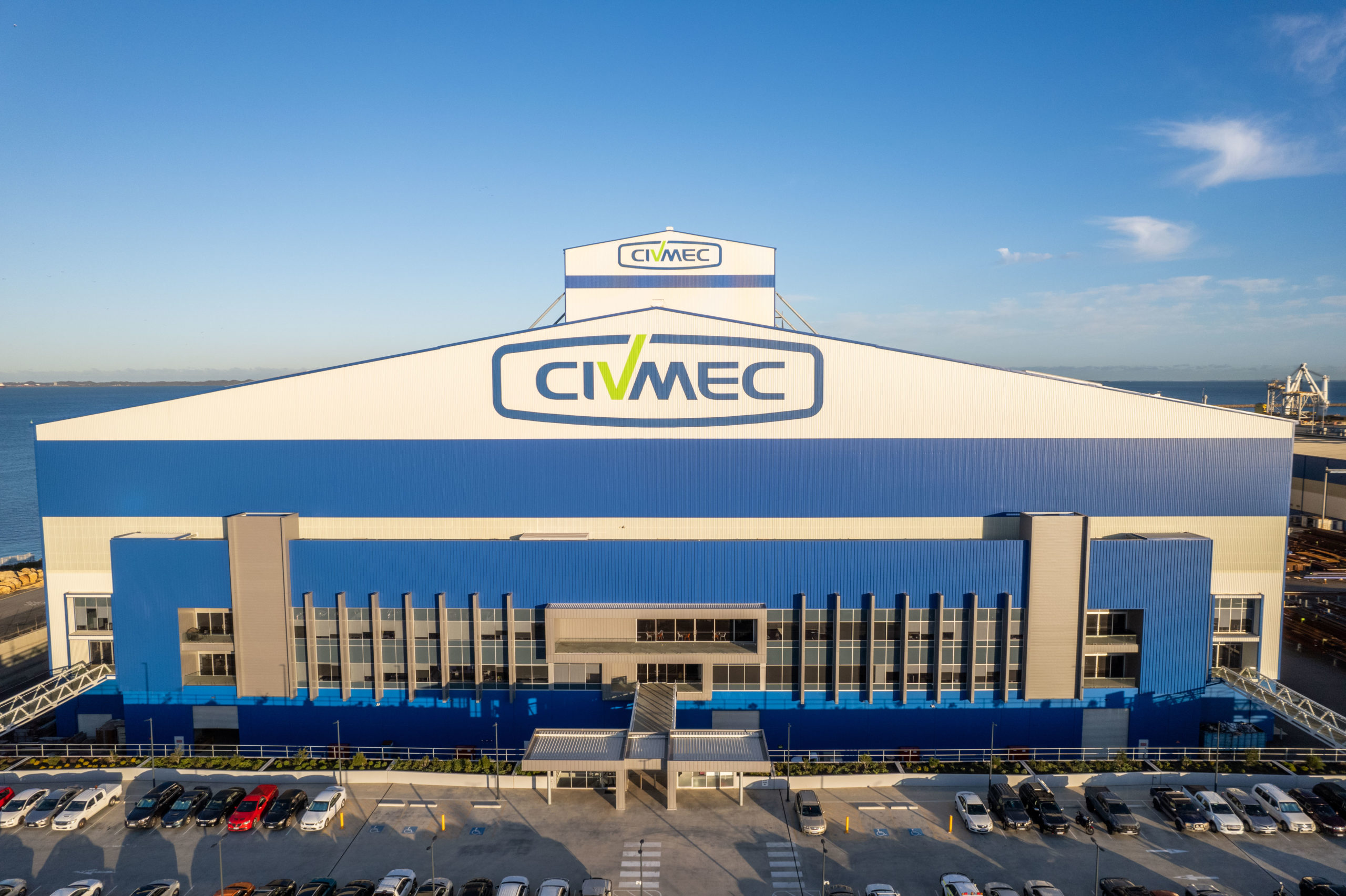When I was last in Australia in March 2020, I was working on a report on the new Australian OPV program which was the initial effort to shape a continuous shipbuilding approach.
That report can be found in Chapter Eight (“Building a New Offshore Patrol Vessel: A Case Study in Strategic Change”) in my book, Joint by Design: The Evolution of Australian Defence Strategy.
I was in Western Australia visiting the Henderson shipyard and discussing the launch of the program with Jim Fitzgerald and Mark Clay of CIVMEC, the engineering company whose role in the program is to build the 27 key modules (blocks) that make up the hull and superstructure of the OPV’s.
This is what I wrote in my case study about the role of CIVMEC in the program:
Civmec’s Henderson facility, is the physical site of the vessels from the third OPV build onward. It is clear from visiting the yard, and looking at the build-out since they started the effort in 2008, that the company made a significant investment in shipbuilding prior to being awarded the OPV contract. But the build of the first two Arafura Class OPVs at the BAE/ASC yard in Adelaide does not take away from the effort of Civmec for the overall program or its preparation to build the remaining ships in the program at Henderson.
The material cutting for the ship is being done at one facility, not two, the one that I visited in Henderson. The material is shipped from Henderson to Adelaide by road and rail, and given that the cost of transport from West to East is significantly less than the other way around, the cost factor of having the initial assembly in Adelaide rather than in Henderson is very manageable.
This also allows the Henderson yard to have a two-ship run-through prior to launching full production at Henderson. This is a digital production facility, which is clearly evident when you visit the cutting facilities at the yard, where precision is the name of the game and where the production workers and staff manage a digital production process.
This includes having a control room for monitoring the parts flow into the yard and working schedules that are designed such that production materials arrive just in time for the production process. When visiting the yard, and walking into the large main assembly and sustainment hall, it is clear that it can accommodate accommodates the Royal Australian Navy’s ship up to the size of the Air Warfare destroyer.
Having to flee Western Australia to get to Sydney to get to back to the United States just before the pandemic lockdown happened meant that I did not get a chance to watch the program evolve over the past nearly three years.
It felt like I have just come back on the 3rd fleet (not quite as long as it took the first and second fleets but felt a bit like that). I felt a bit like the folks who came from the old country by ship but did not have direct communications for several years. Not quite the First Fleet experience but from a communications point of view, it was a bit like it.
Here is what greeted me day of departure from Sydney in March 2020:
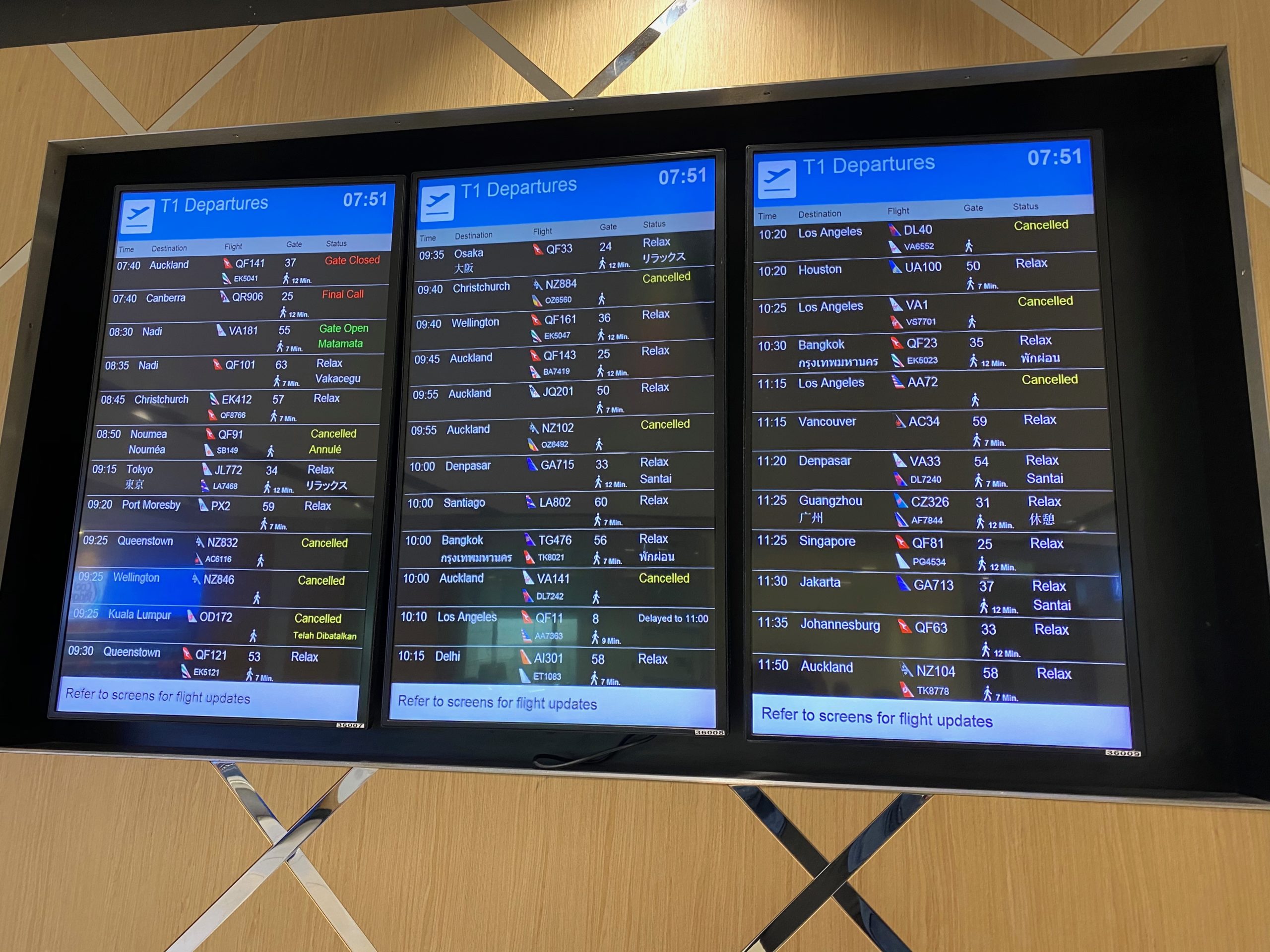
Upon my return to Australia in September 2022, I had a chance to talk with both Jim Fitzgerald, Executive Chairman of Civmec, and with Mark Clay, Project Manager, to get an update on the progress in their side of the program.
Although not a heritage shipbuilder, they had relevant experience which they leveraged for the program and made significant investments to launch the program prior to full on construction.
This is what I wrote at the time of my March 2020 visit: “It is clear that in my initial read of the Civmec choice, I had missed one major area in which they work which is central to shipbuilding; they are players in the oil and gas offshore platform business. These are certainly sea bases and of relevance more generally to managing a shipbuilding enterprise.”
My expectation prior to my discussion with Fitzgerald and Clay was to hear a narrative explaining how the lockdown in Western Australia which cut WA from the rest of an Australia which itself was cut off from the world had slowed the program significantly.
But that was not what I heard.
Obviously, the pandemic created chaos and key disruptions to the workforce and supply chain.
Because the company had stockpiled enough material prior to the pandemic in anticipation of starting the program, they could continue the program. But clearly, resource constraints have been a key challenge to overcome.
As Clay noted: “We had already set up our core supply chain in 2018, so we did have a good start prior to the pandemic. We had ordered enough material to get us through that difficult time.
“And a number of our suppliers had ramped up supplies in anticipation of the program start and had done that prior to the Covid pandemic.”
Fitzgerald reinforced this point.
They also leveraged what they could find in Western Australia to fit in workforce pieces to the effort.
And it must be remembered that this is a digital production process which meant that they could leverage non-Australian expertise in building the program through “remote working” as well.
Obviously, they worked methods for ensuring worker safety required for curb COVID risks as well.
For example, they had to organize lunch breaks for the work force, by groups and would sanitize the area as lunch groups would come in a staggered schedule.
According to Fitzgerald: “We actually found that doing so increased productivity.”
According to Clay, “there are four ships on the go in WA at the moment. In Adelaide Ship 1 is in the water and due to commence builder trials, Ship 2 is progressing to launch and in WA Ships 3, 4 , 5 and 6 are in various stages of construction.”
Vessel consolidation is done in Civmec’s state of the art Assembly Hall by the prime contractor Luerssen and their various subcontractors.. They work with their subcontractors to achieve a finishing process as part of the consolidation, outfit and commissioning process.
Given that conflict in crises with adversaries will certainly disrupt, perhaps the pandemic provided a real-world preparation for the future.
In any case, at least this part of the continuous shipbuilding approach seems “battle tested” so to speak.
And they had to find more innovative ways to find ways to deal with shortfalls as well. This in turn provides a benefit going forward with the program.
And as one can see in the featured photos, the not yet completed assembly hall was clearly finished during the pandemic. By picking an engineering company to shape a new capability for shipbuilding has proven already successful.
The view of the yard in 2019:
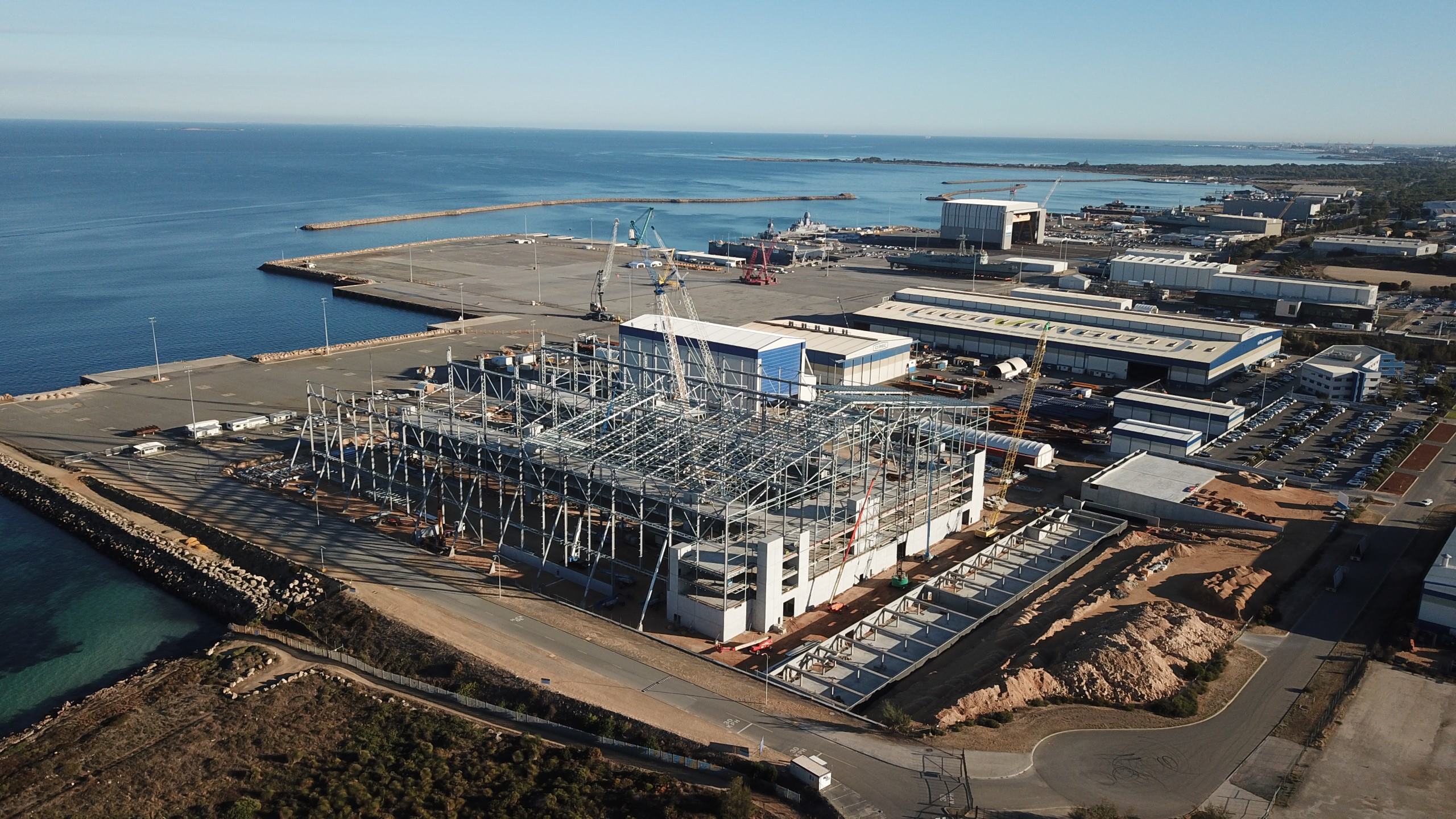
The view now:
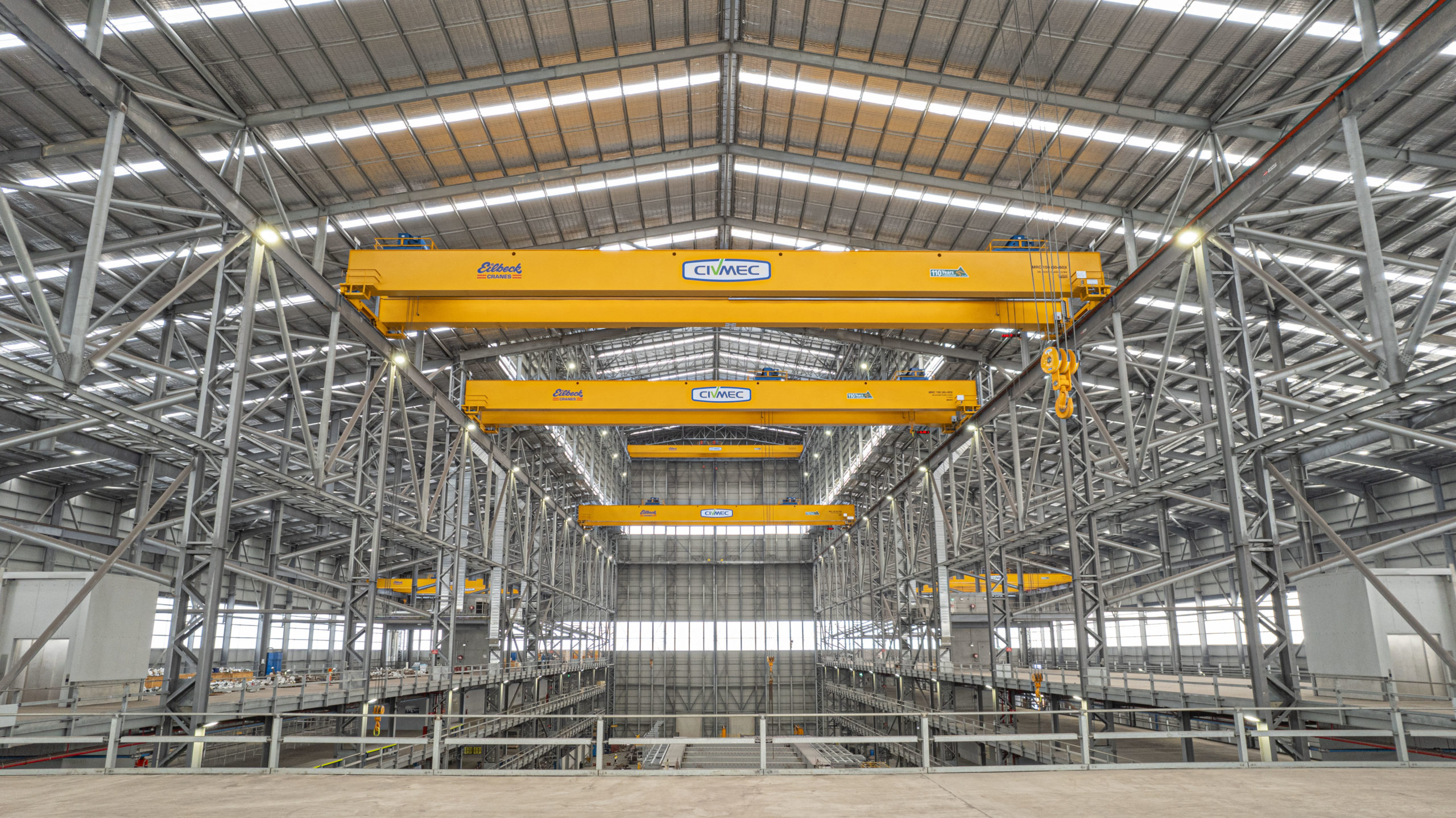
As Fitzgerald proudly underscored: “If you look at the completed facility now, at what we have achieved, and when you explain that to people, most people struggle to believe what we achieved through the height of the Covid pandemic.”


